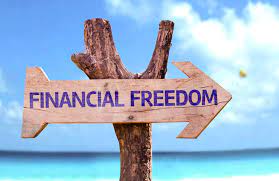Embarking on the journey toward financial freedom is akin to setting sail on the vast oceans of opportunity. It requires preparation, skill, and the right navigational tools to steer through the ebbs and flows of economic currents. With a map charted through wise financial planning and a compass calibrated to your personal goals, crafting your path to financial freedom becomes an achievable voyage rather than a distant dream. Let’s explore how to construct a sturdy vessel that can weather any storm and guide you to the shores of financial independence.
The Blueprint for Financial Freedom
Crafting your path to financial freedom begins with laying down a solid foundation—a blueprint that outlines your financial goals, current resources, and potential obstacles. This blueprint not only serves as a guide but also as a source of motivation to keep you on course through your financial journey.
Setting Your Financial Coordinates
The first step in any journey is knowing your destination. In the realm of financial freedom, this means setting clear, achievable goals. Whether it’s retiring by a certain age, owning a home, or building a substantial investment portfolio, defining these objectives will determine the course of your financial voyage.
Charting the Course: The Role of Financial Planning
Navigating the complex waters of finance requires a well-thought-out plan. Effective financial planning involves assessing your current financial situation, identifying short-term and long-term goals, and devising a strategy to achieve them. This plan acts as your navigational chart, highlighting the best routes and avoiding potential pitfalls along the way.
Building an Emergency Fund: Your Financial Lifeboat
An essential component of your financial plan is an emergency fund—a financial lifeboat that ensures you stay afloat during unexpected storms. Aim to save at least three to six months’ worth of living expenses. This fund provides a buffer against unforeseen events, such as job loss or medical emergencies, preventing them from derailing your journey.
The Winds of Budgeting
Budgeting is the wind in your sails—it propels you forward, ensuring that you are making the most of the resources at your disposal. A well-crafted budget allocates funds to your goals, controls spending, and monitors progress, keeping you on the right track.
The 50/30/20 Rule: A Guiding Wind
One effective budgeting strategy is the 50/30/20 rule, which suggests spending 50% of your income on necessities, 30% on wants, and allocating 20% to savings and debt repayment. This simple formula can help maintain balance, ensuring that you’re working towards your financial goals without sacrificing your current quality of life.
Navigating Investments: The Currents of Growth
Investments are the currents that can accelerate your journey to financial freedom, offering opportunities for your savings to grow over time. From stocks and bonds to real estate and mutual funds, the investment landscape is diverse, each with its own risk and reward profile.
Diversification: Charting a Safe Passage
Diversification is a key strategy in navigating investment waters safely. By spreading your investments across different asset classes, you can reduce risk and increase the likelihood of steady growth. Think of diversification as plotting a course that avoids putting all your eggs in one basket, ensuring that a setback in one area won’t capsize your financial ship.
Weathering Storms: Risk Management
On the journey to financial freedom, storms are inevitable. Risk management involves identifying potential financial risks and implementing strategies to mitigate them. This might include insurance policies to protect against loss of income, health issues, or property damage, ensuring that you can weather any storm without significant loss.
The Importance of Insurance: Your Financial Safety Net
Insurance acts as a safety net, catching you in times of trouble. Whether it’s health insurance, life insurance, or property insurance, having the right policies in place can protect you and your family from financial disaster in the face of unforeseen events.
Continuous Navigation: Review and Adjust
The path to financial freedom is not static; it requires continuous navigation and adjustment. Regularly reviewing your financial plan, budget, and investments allows you to make necessary adjustments in response to life changes, economic shifts, or progress towards your goals.
Setting Sails for Success
An annual financial review is a good practice, providing an opportunity to celebrate achievements, reassess goals, and recalibrate your financial plan. This ensures that your financial vessel remains seaworthy, capable of reaching the destination of financial freedom.
Navigating your way to financial freedom is a journey that demands attention, discipline, and a proactive approach to managing your finances. With a solid plan in place, a budget that guides your daily decisions, and an investment strategy that propels you forward, achieving financial independence is within reach. Remember, the seas of finance are ever-changing, and flexibility, coupled with a keen eye on your financial compass, will ensure that you reach the shores of financial freedom, ready to enjoy the wealth of opportunities it brings.
